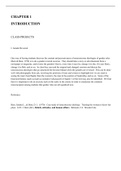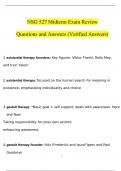Samenvatting
Summary IEFR - Internal and External Financial Reporting (theoretical part) - Bridging MBA - KUL
- Instelling
- Katholieke Universiteit Leuven (KU Leuven)
Consists of: financial accounting (assets, liabilities) financial analysis (ratio analysis, cashflow) cost accounting (full costing, variable costing, CVP, BE, ABC, standard costing, variance analysis)
[Meer zien]













